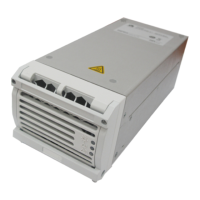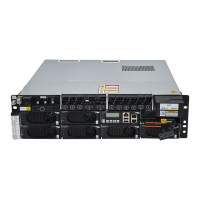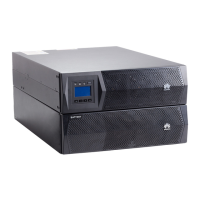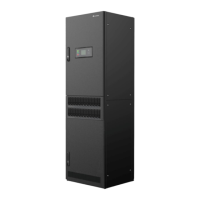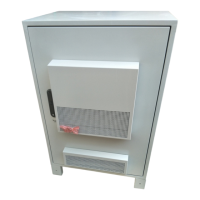Do you have a question about the Huawei DPS Blade V100R001C50 and is the answer not in the manual?
This document is for internal use only. It aims to guide personnel to perform product selection, commercial configuration, and sales.
The internal and external model numbers are consistent and named based on specific conventions.
Details the naming conventions for internal and external model numbers, including component descriptions.
The DPS Blade V100R001C50 is an outdoor/indoor wall-mounted power supply for micro base stations.
Lists the components included in the DPS Blade V100R001C50 product, such as power modules and batteries.
Describes the different mounting options and maintenance procedures for the DPS Blade V100R001C50.
Provides rules for cascading PSUs and lithium batteries, including signal and network management cable connections.
Illustrates side mounting and flush mounting configurations on small and large poles.
Details installation rules for different scenarios, including pole, wall, channel steel, and angle steel mounting.
Specifies the operating, transportation, and storage environment parameters, including temperature and humidity.
Outlines limitations related to application area and ECCN classification for the product.
Provides information on product export control, ECCN classification, and business continuity requirements.
Details typical system configurations for capacity expansion through parallel connection of PSUs and batteries.
Outlines the step-by-step procedures for configuring a DC blade power system.
Specifies how to determine the AC input voltage, with default settings provided.
Explains how to determine power grid types and the associated alarms or warnings.
Provides guidance on identifying high-temperature areas and associated service life risks for lithium batteries.
Addresses the warning for sites within 500 m of the sea due to potential corrosion.
Allows selection of predefined scenarios (1500W, 3200W, 4800W) or manual selection.
Explains how to determine input load power, considering maximum and average load, and line loss.
Specifies how to set the power backup time, with default values and ranges provided.
Details the default and optional lithium battery models available for the system.
Provides the method for calculating the required number of lithium batteries based on capacity and load.
Determines whether the Live-C App is required for product configuration.
Guides on inputting the number of loads, with specific values for different scenarios.
Refers to section 3.2.2 for rules on selecting northbound communication cables.
Determines if a load grounding clip is required, with default settings and conditions.
Refers to section 3.1 for rules on selecting installation accessories.
Lists installation modes and rules for configuring mounting accessories for the DPS Blade V100R001C50.
Covers the rules for configuring power and terminal cables for the DPS Blade system.
Details the type, length, and configuration of AC input power cables, noting delivery depends on site survey.
Provides rules for selecting northbound communication cables, especially when used with Huawei RRUs.
This document is for internal use only. It aims to guide personnel to perform product selection, commercial configuration, and sales.
The internal and external model numbers are consistent and named based on specific conventions.
Details the naming conventions for internal and external model numbers, including component descriptions.
The DPS Blade V100R001C50 is an outdoor/indoor wall-mounted power supply for micro base stations.
Lists the components included in the DPS Blade V100R001C50 product, such as power modules and batteries.
Describes the different mounting options and maintenance procedures for the DPS Blade V100R001C50.
Provides rules for cascading PSUs and lithium batteries, including signal and network management cable connections.
Illustrates side mounting and flush mounting configurations on small and large poles.
Details installation rules for different scenarios, including pole, wall, channel steel, and angle steel mounting.
Specifies the operating, transportation, and storage environment parameters, including temperature and humidity.
Outlines limitations related to application area and ECCN classification for the product.
Provides information on product export control, ECCN classification, and business continuity requirements.
Details typical system configurations for capacity expansion through parallel connection of PSUs and batteries.
Outlines the step-by-step procedures for configuring a DC blade power system.
Specifies how to determine the AC input voltage, with default settings provided.
Explains how to determine power grid types and the associated alarms or warnings.
Provides guidance on identifying high-temperature areas and associated service life risks for lithium batteries.
Addresses the warning for sites within 500 m of the sea due to potential corrosion.
Allows selection of predefined scenarios (1500W, 3200W, 4800W) or manual selection.
Explains how to determine input load power, considering maximum and average load, and line loss.
Specifies how to set the power backup time, with default values and ranges provided.
Details the default and optional lithium battery models available for the system.
Provides the method for calculating the required number of lithium batteries based on capacity and load.
Determines whether the Live-C App is required for product configuration.
Guides on inputting the number of loads, with specific values for different scenarios.
Refers to section 3.2.2 for rules on selecting northbound communication cables.
Determines if a load grounding clip is required, with default settings and conditions.
Refers to section 3.1 for rules on selecting installation accessories.
Lists installation modes and rules for configuring mounting accessories for the DPS Blade V100R001C50.
Covers the rules for configuring power and terminal cables for the DPS Blade system.
Details the type, length, and configuration of AC input power cables, noting delivery depends on site survey.
Provides rules for selecting northbound communication cables, especially when used with Huawei RRUs.
| Brand | Huawei |
|---|---|
| Model | DPS Blade V100R001C50 |
| Category | Power Supply |
| Language | English |



